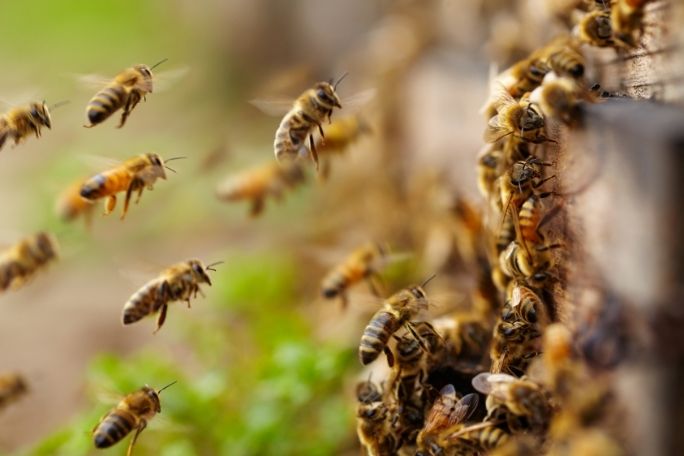Lesson summary
In a flipped classroom-style activity students watch clips at home to deepen their knowledge about the importance of bees to our food security and the causes of declining bee populations. In class students consider strategies to ensure the survival of bees and other pollinators. Students will learn that declining biodiversity is one of many challenges associated with the systems that produce most of the food Australians eat. Students will learn about World Bee Day and create a strategy to raise awareness of this annual event at your school or local community by incorporating their understanding of the importance of pollinators to food security.
Learning intentions:
Students will...
- understand the dilemma facing bees and other pollinators
- understand how the food production system depends on pollinators
- understand how we all depend on the food production system
- know some practices and challenges associated with food production
Success criteria:
Students can...
- create a flow diagram based on the possible consequences of a decline in pollinator populations
- evaluate the effectiveness of a range of pollinator-related engagement strategies
- promote the need for World Bee Day using food security-related related information
Lesson guides and printables
Lesson details
Curriculum mapping
Australian curriculum content descriptions:
Year 9 Geography:
- The capacity of the world’s environments to sustainably feed the projected future global population (ACHGK064).
- Challenges to food production, including land and water degradation, shortage of fresh water, competing land uses, and climate change, for Australia and other areas of the world (ACHGK063).
Year 10 Geography:
- Human-induced environmental changes that challenge sustainability (ACHGK070).
- Environmental world views of people and their implications for environmental management (ACHGK071).
Syllabus outcomes: GE5-2, GE5-3, GE5-4, GE5-5.
General capabilities: Critical and Creative Thinking, Ethical Understanding.
Cross-curriculum priority: Sustainability.
Relevant parts of Year 9 achievement standards: Students analyse interconnections between people, places and environments and explain how these interconnections influence people, and change places and environments. Students use initial research to identify geographically significant questions to frame an inquiry. They evaluate a range of primary and secondary sources to select and collect relevant and reliable geographical information and data. They present findings, arguments and explanations using relevant geographical terminology and digital representations in a range of appropriate communication forms.
Relevant parts of Year 10 achievement standards: students explain how interactions between geographical processes at different scales change the characteristics of places. Students identify, analyse and explain significant interconnections between people, places and environments and explain changes that result from these interconnections and their consequences. They predict changes in the characteristics of places and environments over time, across space and at different scales and explain the predicted consequences of change.
Topics: Love Food? Love Bees!, Biodiversity, Consumption.
Unit of work: Love Food? Love Bees! – Food Security and Sustainability – Year 9 & 10
Time required: 90 mins.
Level of teacher scaffolding: Medium. In discussion activities students can be guided by questioning.
Resources required
- Student Worksheets – one copy per student
- Enough internet-enabled devices to facilitate paired work
- A class set of A4 or A3 sheets of paper
- Butchers paper for brainstorming in small groups
Skills
This lesson is designed to build students’ competencies in the following skills:
- Collaboration
- Communication
- Community engagement
- Creativity
- Critical thinking
- Digital literacy
Additional info
This lesson has been created in partnership with ACT for Bees. ACT for Bees is a not-for-profit organisation taking action to preserve these essential pollinators, ensuring a food-secure future.


Welcome back!
Don't have an account yet?
Log in with:
By signing up to Cool.org you consent and agree to Cool's privacy policy to
store, manage and process your personal information. To read more, please see
our privacy policy here(Opens in new tab).
Create your free Cool.org account.
Many of our resources are free, with an option to upgrade to Cool+ for premium content.
Already have an account?
Sign up with:
By signing up to Cool.org you consent and agree to Cool's privacy policy to
store, manage and process your personal information. To read more, please see
our privacy policy here(Opens in new tab).